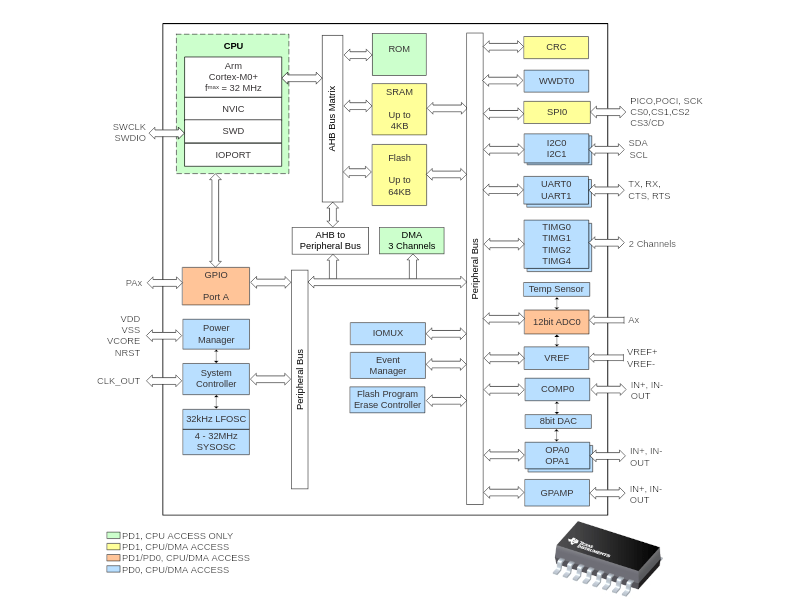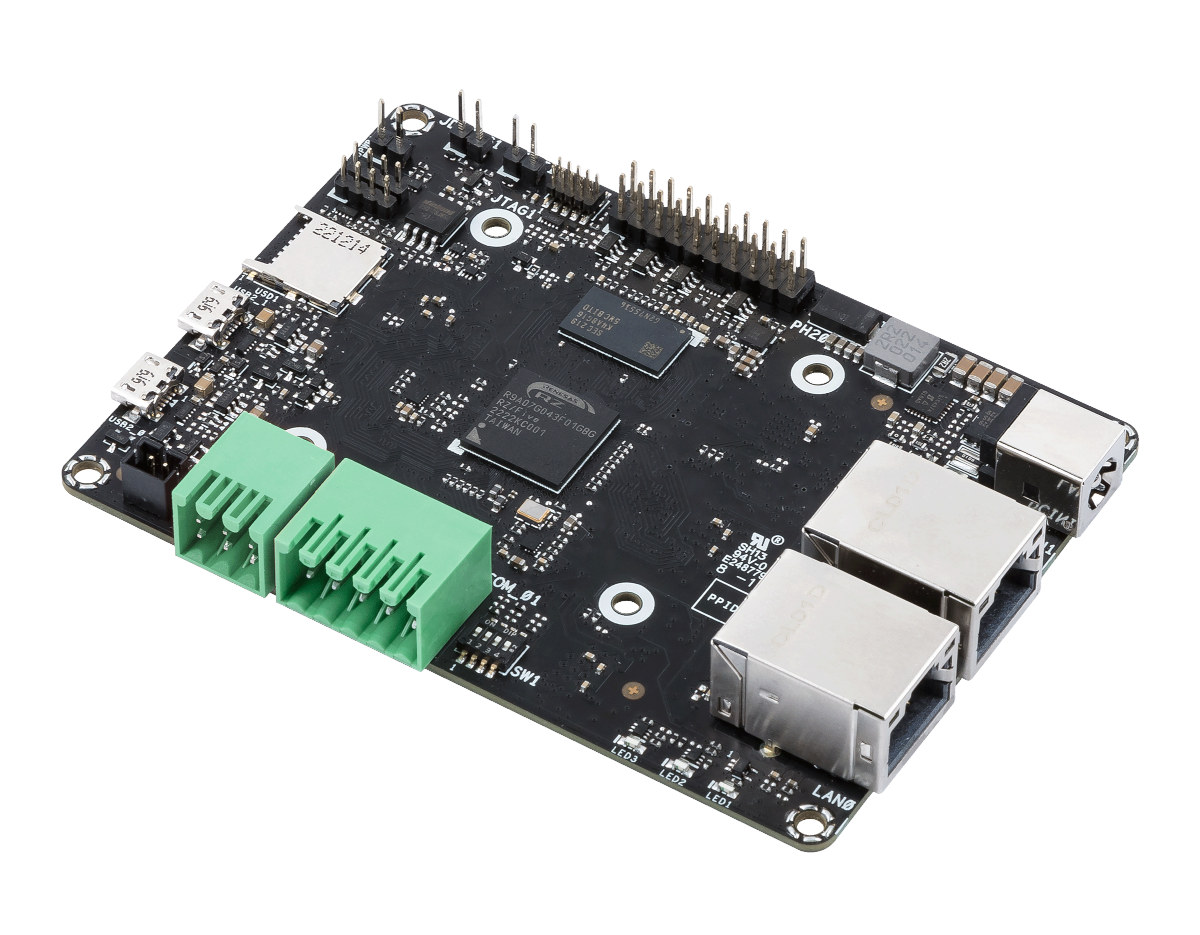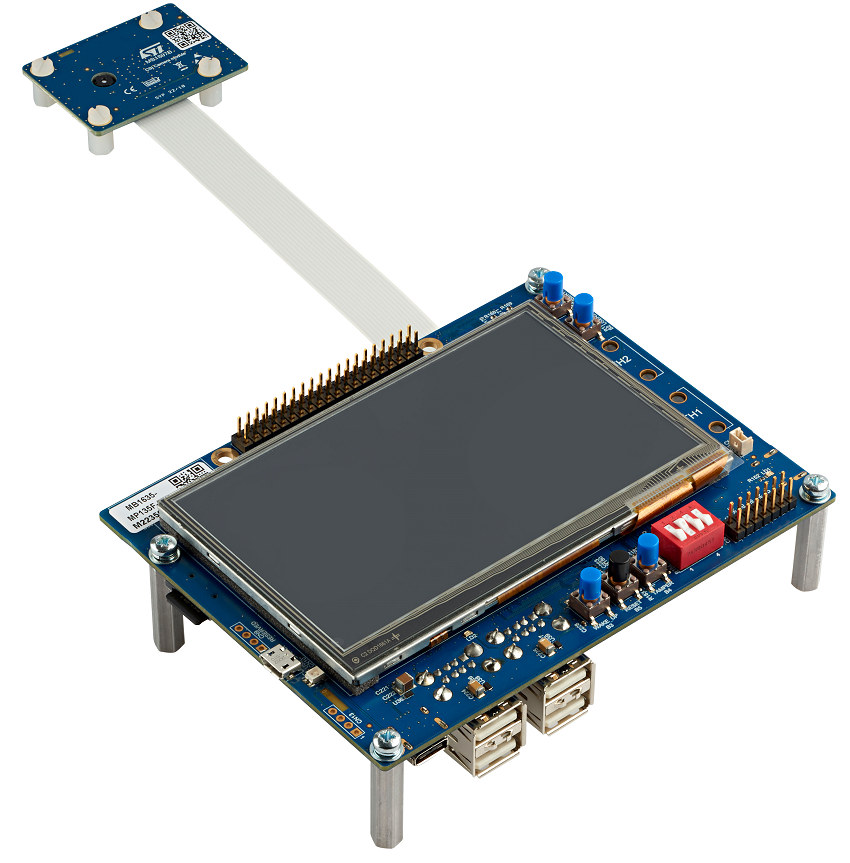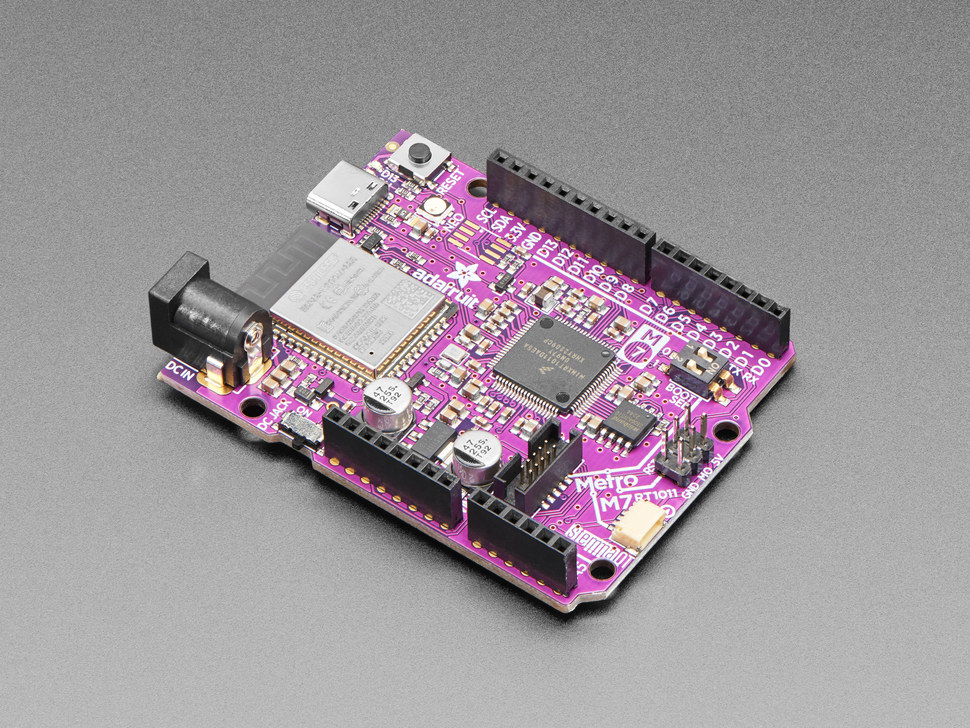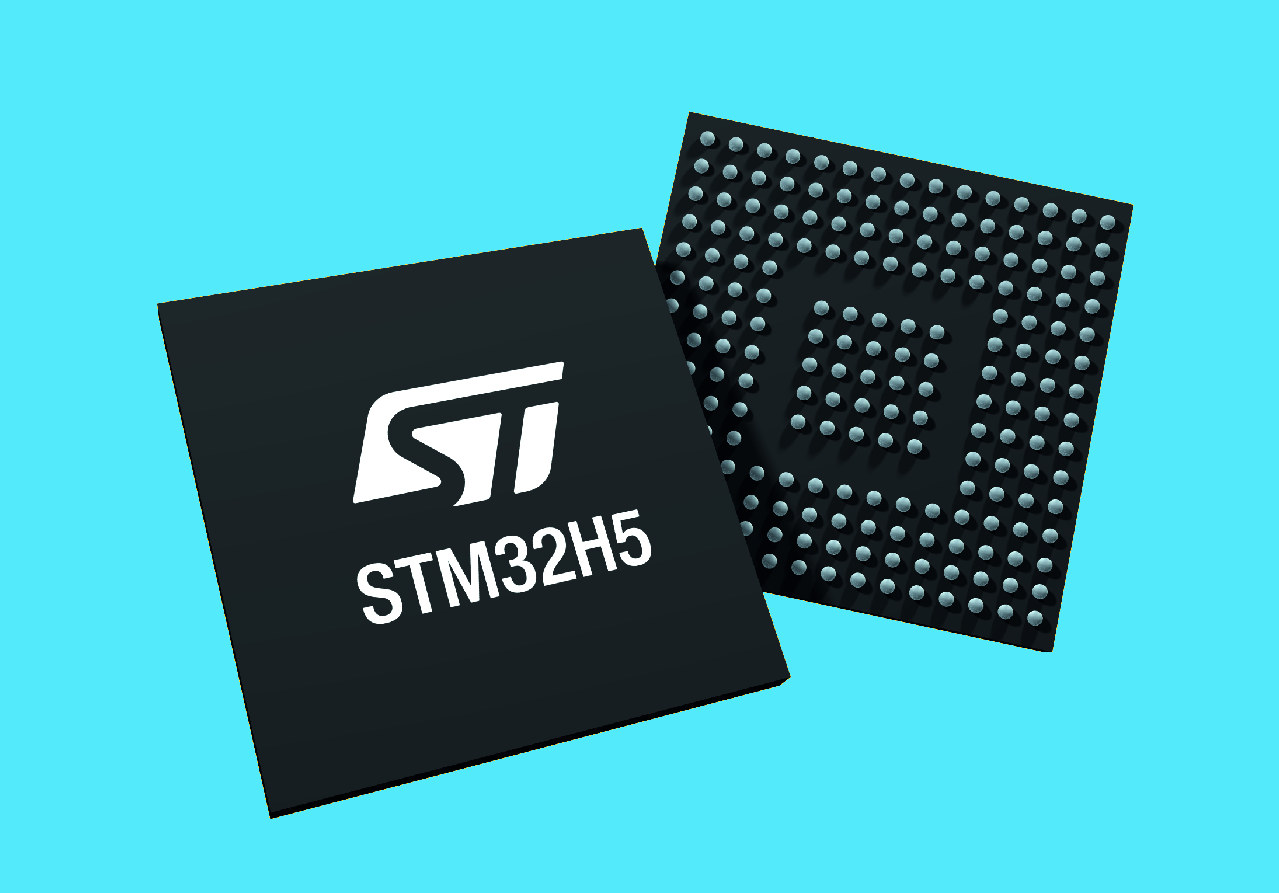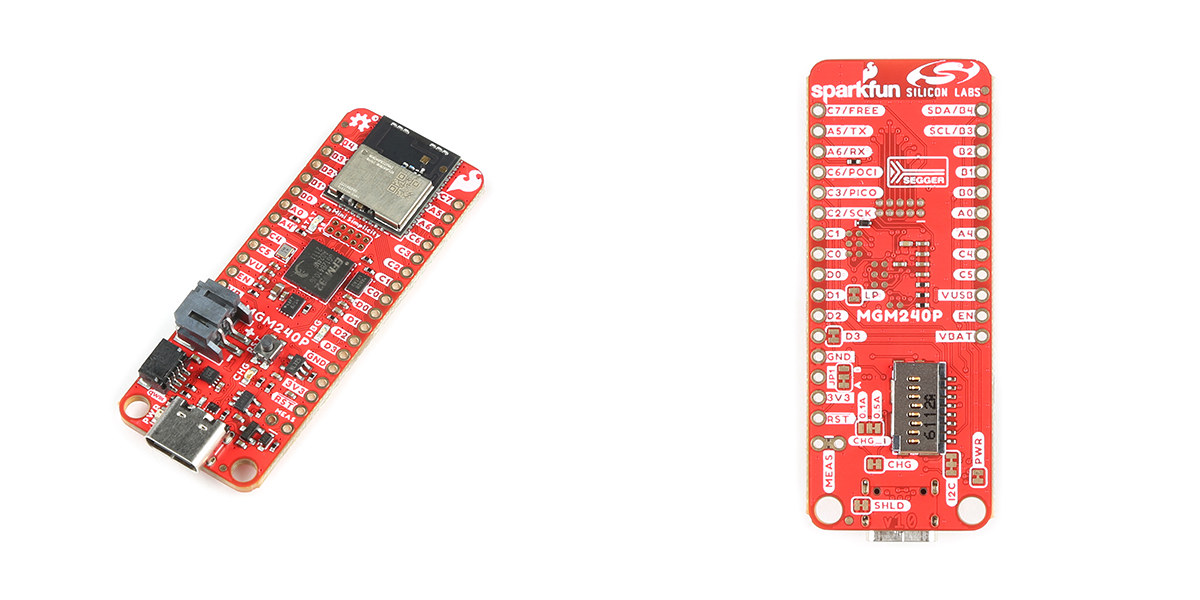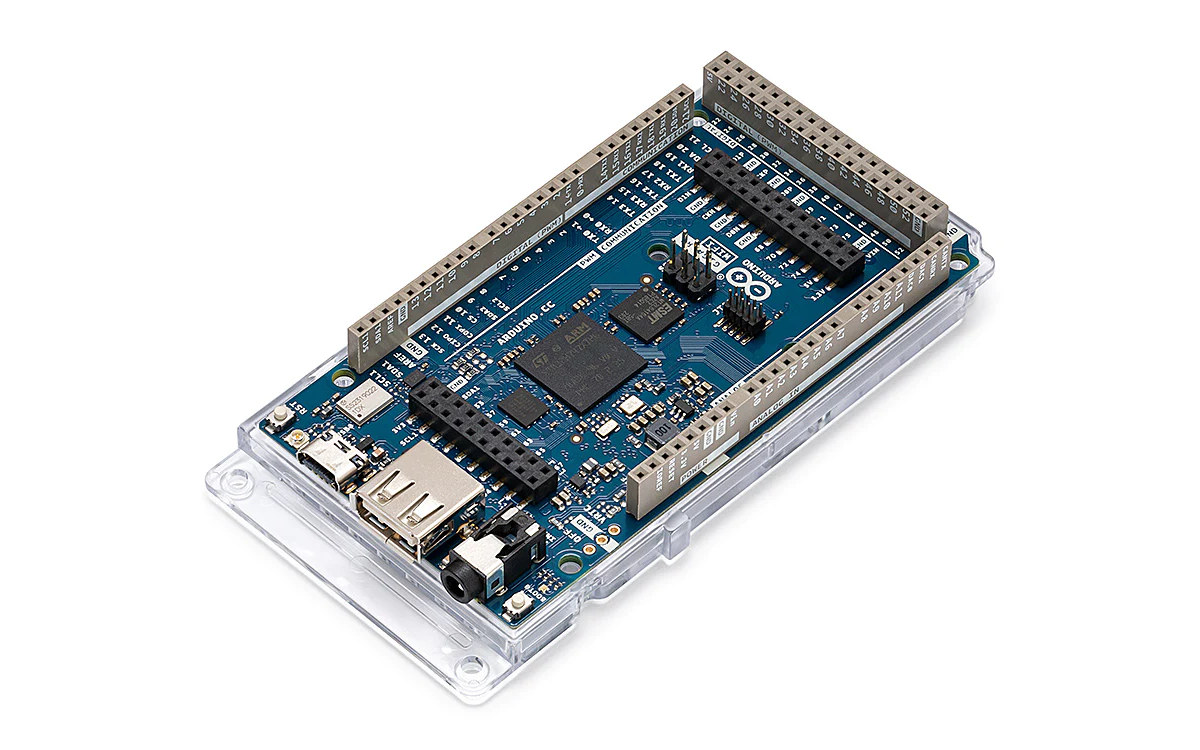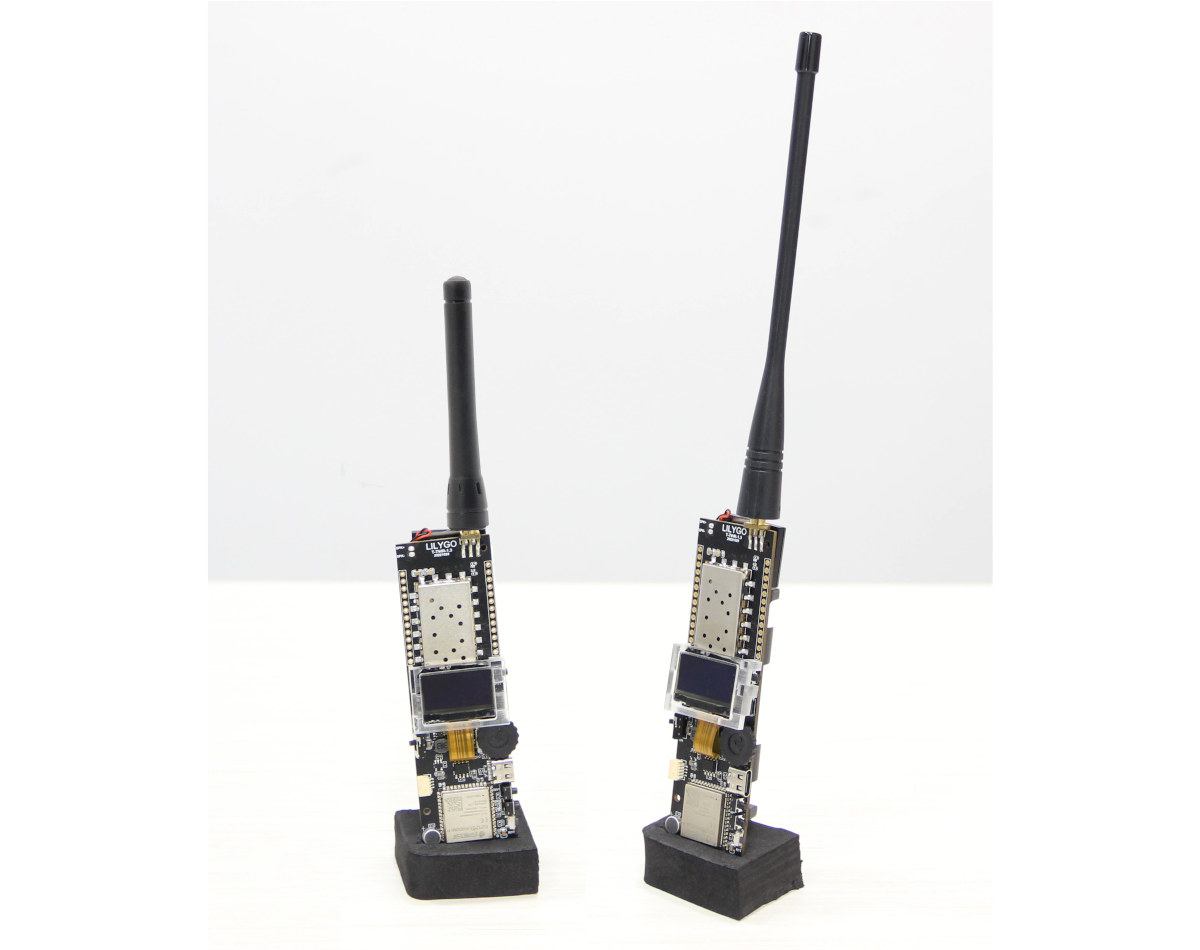Texas Instruments has just introduced its low-cost MSPM0 Arm Cortex-M0+ microcontroller portfolio comprised of the MSPM0L series with a 32 MHz CPU, up to 64 kB of flash, and 4 kB SRAM, and the MSPM0G series with an 80 MHz CPU, up to 128 kB of flash and 32 kB SRAM. Texas Instruments MSPM0L MSPM0L1306 key features: CPU – Arm 32-bit Cortex-M0+ core @ up to 32 MHz Memory – Up to 4KB SRAM Storage – Up to 64KB flash Digital peripherals 3-channel DMA controller 4x 16-bit general-purpose timers, each with two capture/compare registers supporting low-power operation in STANDBY mode, supporting a total of 8 PWM channels Windowed watchdog timer Analog peripherals 12-bit 1.45-Msps analog-to-digital converter (ADC) with up to 10 total external channels Configurable 1.4-V or 2.5-V internal ADC voltage reference (VREF) 2x zero-drift, zero-crossover chopper operational amplifiers (OPA) 1x general-purpose amplifier (GPAMP) 1x high-speed comparator (COMP) with 8-bit […]
ASUS unveils Tinker V RISC-V single board computer, Tinker board 3 SBC with Rockchip RK3568 SoC
ASUS IoT has added two new members to the Tinker board family with the Tinker V and Tinker Board 3 single board computers powered by respectively Renesas RZ/Five single-core RISC-V SoC and Rockchip RK3568 quad-core Arm Cortex-A55 processor. ASUS Tinker V RISC-V SBC Tinker V specifications: SoC – Renesas RZ/Five single core AndesCore AX45MP RISC-V processor clocked at 1.0 GHz System Memory – 1GB DDR4 Storage – MicroSD card slot, optional 16GB eMMC flash, optional SPI flash Networking – 2x Gigabit Ethernet RJ45 ports USB – 1x Micro USB port, 1x Micro USB (OTG) port Serial – 2x CAN Bus via 6-pin terminal block 2x COM RS232 via 5-pin terminal block Expansion – 20-pin GPIO header with up to 2x UART, 2x I2C, 4x GPIO, 2x ADC, 1x SPI, 3.3V, and GND Debugging – JTAG pin header Power Supply – 10 to 24V DC via 5.5/2.5 mm DC barrel jack […]
STMicro introduces cost-optimized STM32MP13 Cortex-A7 microprocessor
STMicroelectronics’ STM32MP13 1 GHz single-core Arm Cortex-A7 microprocessor series is the latest addition to the Linux-capable STM32MP1 family, with a cost-optimized design that does without the Cortex-M4 real-time core found in the original STM32MP15 series, while still offering Ethernet, CAN FD, camera and display depending on the specific SKU: STM32MP131, STTM32MP133, or STM32MP135. STM32MP131 The STM32MP131 is a single-core Cortex-A7 core clocked at 650 MHz or 1GHz with Ethernet connectivity and is the most cost-effective part of the new STM32MP13 series. Four parts are available in three different packet sizes (TGBGA 289, TFBGA 320, and LFBGA 289) as well as some parts with “advanced security features” that include a cryptographic accelerator, memory protections, code isolation mechanisms for runtime protection, functions to ensure platform authentication, and a complete security ecosystem. The STM32MP131 can run entry-level Linux, bare metal or RTOS systems with Microsoft Azure RTOS pre-integrated. STM32MP133 The STM32MP133 single-core Cortex-A7 […]
Arduino UNO compatible Adafruit Metro M7 features 500 MHz NXP i.MX RT1011 Cortex-M7 SoC
Adafruit Metro M7 is a development board based on a 500 MHz NXP i.MX RT1011 Arm Cortex-M7 crossover MCU that follows Arduino UNO form factor and integrates the ESP32-based “AirLift” WiFi module for wireless connectivity. The board also comes with 4MB QSPI storage, a few LEDs and buttons, a Qwiic connector for additional expansion beyond Arduino Shields, and an SWD connector for debugging. The board takes 6V to 12V DC input via a power barrel jack, but can also be powered through its USB Type-C port. Adafruit Metro M7 specifications: SoC – NXP iMX RT1011 crossover microcontroller with an Arm Cortex-M7 clocked at 500 MHz and 128KB SRAM/TCM Storage – 4MB of QSPI XIP Flash Wireless – AirLift WiFi co-processor with TLS/SSL support (better known as ESP32-WROOM-32) USB – 1x USB Type-C port for power and programming Expansion Arduino UNO headers for Arduino shields compatibility STEMMA QT connector for I2C […]
STMicro STM32H5 Arm Cortex-M33 MCU clocks at 250 MHz, supports STM32Trust TEE Secure Manager
STMicroelectronics has announced the STM32H5 Arm Cortex-M33 “high-performance” microcontroller family clocked at up to 250 MHz and supporting STM32Trust TEE Secure Manager to boost both performance and security in “next-generation smart applications”. The STM32H5 family has three product types namely the higher-end STM32H563/573 with up to 2MB flash, 640KB SRAM, Ethernet, and hardware security, the STM32H562 with a similar design but fewer interfaces, and the entry-level STM32H502 with 128KB flash, 32KB SRAM. STM32H5 key features and specifications: MCU core – Arm Cortex-M33 core with TrustZone technology, digital signal processing (DSP) and floating-point unit (FPU) running up to 250 MHz; Up to 375 DMIPS and a 1023 CoreMark score executing from the flash memory Memory and Storage STM32H563/573/562 – 1 to 2 Mbytes of flash memory, 640 Kbytes of SRAM STM32H503 – 128 Kbytes of flash memory and 32 Kbytes of RAM. OSPI serial flash memory interface Up to 2x SDMMC […]
SparkFun Thing Plus Matter – MGM240P board supports Matter, Zigbee, OpenThread, and Bluetooth Low Energy 5.3
SparkFun Thing Plus Matter – MGM240P board targets the development of applications using the Matter IoT protocol and features the MGM240P module based on Silicon Labs EFR32MG24 Arm Cortex-M33 wireless microcontroller with an 802.15.4 radio for Zigbee and OpenThread plus a Bluetooth Low Energy (BLE) 5.3 radio. The board also offers two rows of I/Os for upto 21 GPIOs and a Qwiic connector for expansion, another EFRM32 MCU acting as a J-link debugger, a microSD card, and can be powered via USB-C or a LiPo battery. SparkFun Thing Plus Matter – MGM240P specifications: MGM240P wireless module SoC – Silicon Labs EFR32MG24 microcontroller CPU – 32-bit Arm Cortex-M33 @ 39 MHz (MCU/module specs say up to 78 MHz, but maybe it’s clocked lower in this board for some reason, maybe lower power consumption?) Memory/Storage – 1536kB Flash Memory, 256kB RAM Wireless – 802.15.4 wireless protocols (Zigbee and OpenThread) and Bluetooth Low […]
Arduino GIGA R1 WiFi board launches with STM32H7 MCU, up to 76 I/O pins
Arduino GIGA R1 WiFi board brings the STM32H7 dual-core Cortex-M7/M4 microcontroller found in the Portenta H7 boards to the larger Arduino Mega/Due form factor with up to 76 GPIO pins. As its name implies, the board also comes with a WiFi 4 (and Bluetooth 5.1) module, as well as an audio jack, a USB Type-C port for programming, a USB 2.0 Type-A host port, and extra connectors for a display and a camera. Arduino GIGA R1 WiFi board specifications: Microcontroller – STMicro STM32H747XI Cortex-M7 @ 480 MHz + M4 @ 200 MHz MCU with 2MB dual-bank Flash memory, 1 MB RAM, Chrom-ART graphical hardware accelerator System Memory – 8MB SDRAM Storage – 16MB QSPI NOR flash Connectivity – 2.4GHz WiFi 802.11b/g/n up to 65 Mbps and Bluetooth 5.1 BR/EDR/LE via Murata 1DX module Display – 20-pin header (J5) Camera – 20-pin Arducam camera header (J6) USB 1x USB Type-C port […]
LILYGO T-TWR is an ESP32-S3 board with an SA868 Walkie-Talkie module
LILYGO T-TWR is an ESP32-S3 development board fitted with an SA868 Walkie-Talkie module and a UHF or VHF antenna, a speaker, a microphone, a small 0.96-inch OLED, and a 18650 battery holder, plus some I/Os for expansion. Equipped with an ESP32-S3-WROOM-1-16NR8 module, the T-TWR offers WiFi 4 and Bluetooth 5.0 connectivity, a dual-core processor with 16MB flash and 8MB PSRAM, and enables users to design their own Walkie-Talkie, while its expansion capabilities allow the control of devices. LILYGO T-TWR specifications: Wireless module – Espressif ESP32-S3-WROOM-1-N16R8 module with ESP32-S3 dual-core LX7 microprocessor @ up to 240 MHz with Vector extension for machine learning, 16MB FLASH, 8MB PSRAM, WiFi 4 and Bluetooth 5 LE/Mesh Display – 0.96-inch OLED with 128×64 resolution based on SSD1306 I2C display driver SA868 Walkie-Talkie module based on RDA1846S chip Bandwidth: 12.5 kHz/25 kHz Sensitivity: -124 dBm Support 1.6W or 1.8W mode. The latter is not recommended due […]

